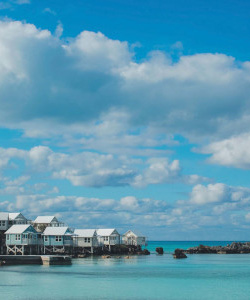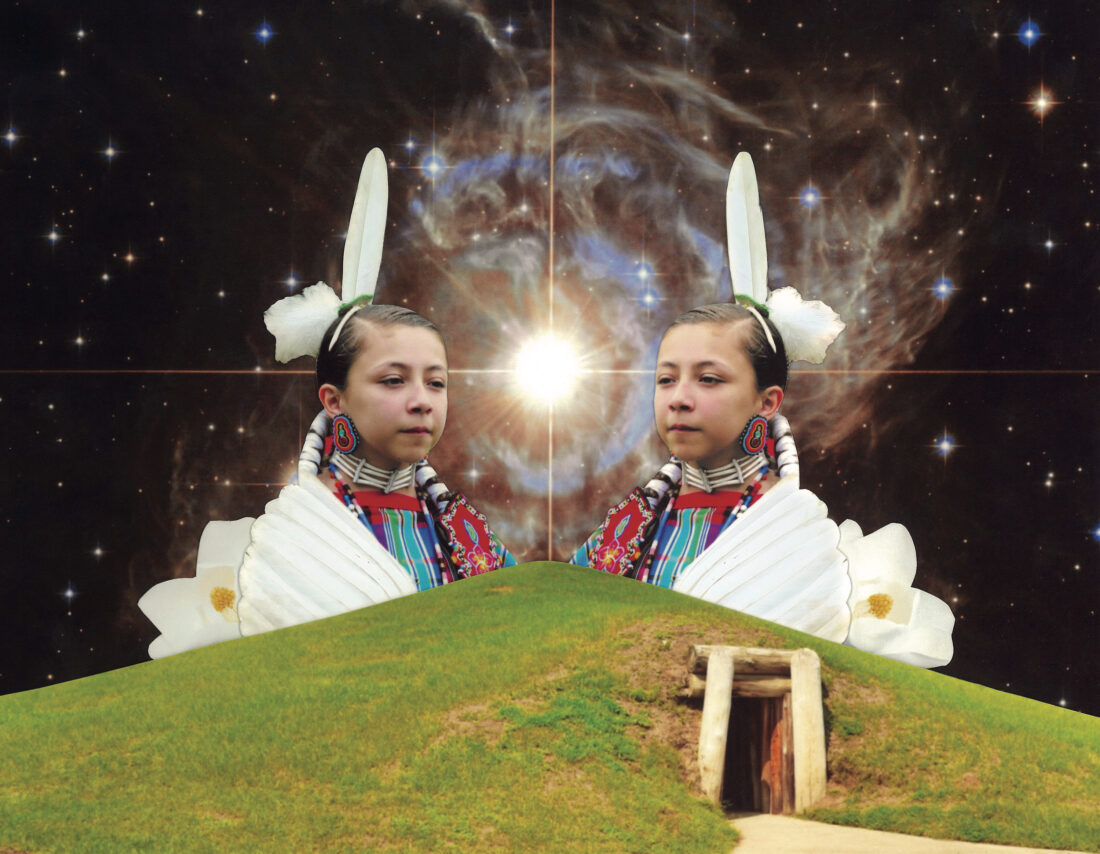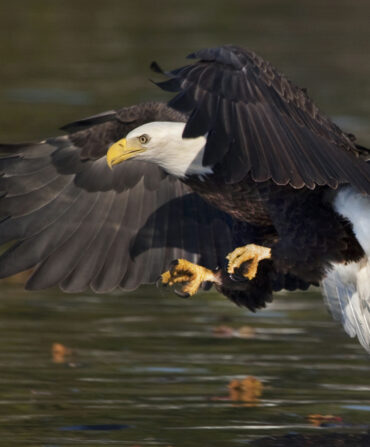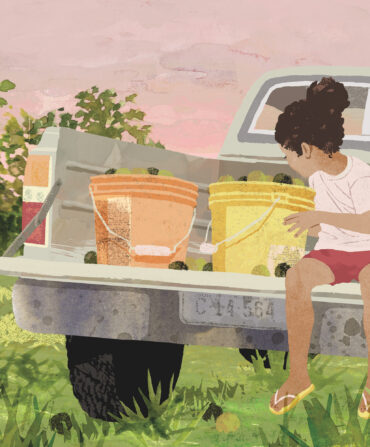Down in the heart of Georgia, where the hilly Piedmont plateau meets the flat Coastal Plain, the Ocmulgee River bends through the landscape. Along those riverbanks, a civilization emerged, and for at least twelve thousand years, Indigenous tribes have called this place home and left evidence behind: a Clovis point spearhead from 10,000 BCE, earthen pottery made around 3,500 BCE, and European dishware from the 1700s. The most arresting, however, is a series of earthworks, some of which rise fifty-five feet high, called the Ocmulgee Mounds.

The Early Mississippian people built seven mounds at Ocmulgee and hundreds of others across a vast but interconnected territory, stretching from Florida west to Texas and as far north as Wisconsin; in the Late Mississippian period, they constructed two more in the Ocmulgee floodplain. Each of those mounds served a different purpose. They built one over a ceremonial cornfield. The leader of the community lived atop the Great Temple Mound, where he had the best view and could monitor potential threats. The site’s now-reconstructed Earth Lodge hosted gatherings and ceremonies. Burials happened at some. Today, more than a thousand years on, they loom on the edge of Macon, a beacon to their descendants.
One weekend each September, the Muscogee (Creek) people answer the call, assembling there as their ancestors once did to commemorate their connection to this place—and to remember the hardships and traumas that generations of their families endured. Ahead of my visit to that Ocmulgee Indigenous Celebration last fall, I spoke with Tracie Revis, the director of advocacy for the Ocmulgee National Park & Preserve Initiative. “Our people are still here,” said Revis, a citizen of Muscogee (Creek) Nation who is also of Yuchi heritage. “People talk about us as if we’re the dinosaurs of this land, creatures that no longer exist. We didn’t stop existing; we just went someplace else.”
That displacement peaked in 1813 with the Creek Indian War. By 1821, a series of treaties had forced the Creek from this rich river bottomland so European settlers could use it for agriculture, pushing the tribe west to present-day Oklahoma. Other tribes—including the Choctaw, the Cherokee, and the Chickasaw—met the same fate. When President Andrew Jackson signed the Indian Removal Act in 1830, any tribal members who remained in the Southeast had to march to Oklahoma, too.
The Muscogee (Creek) call their removal the Road to Misery, and when they left, they took their fires with them, holding a bit of their culture close. Around the flames, they danced and passed down the tales that kept their traditions alive. “We still have our songs,” Revis said. “I have stories that I got from my grandma, who got them from her great-grandma that she was raised by, about removal. We still sing the songs that we sang on the trail.” Since the 1950s, Revis’s family has journeyed between Okmulgee, Oklahoma, and their ancestral homelands, and she grew up with the Ocmulgee Mounds as part of her identity.
As I emerged from the forest around the mounds on the day of the celebration, the thrum of a hand drum beat like a rapid heart, pulsing through the sacred site. Revis pointed out that the event emphasizes education, not spectacle; that’s why the group invites the public. For generations, her ancestors and their culture were subjected to physical and cultural genocide, and the imagery surrounding the Muscogee (Creek) filled with errors. They do not call this gathering a powwow, for instance, as Western tribes do. No one wears elaborate headdresses here, as the people of this region did not traditionally don them. Vivid color filled the scene, though, from the rich hues of the wood being hand carved into a canoe to the bright skirts worn by the women at the center of the dance ring with tin cans tied around their shins, the metal glinting from underneath their hems. “We’ve been erased from the way this region’s history has been taught and told,” Revis said, “and now we’re making sure we are a part of that story.”
After the tribes’ removal, plantations and farms that occupied the land showed little regard for the mounds’ original purpose or significance. The economic ambitions of Macon, which was founded in 1823, spurred the region’s industrial age, and in 1843, a railroad company constructed a line right through the Ocmulgee Mounds site, destroying a portion of the Lesser Temple Mound. A second line built thirty years later ravaged part of the Funeral Mound.
As the land was developed, human remains and artifacts surfaced, and the selling of those relics and display of the remains became part of the attraction of the mounds. In 1936, the federal government declared seven hundred acres around seven of the mounds a national monument, shielding them from further degradation. That didn’t stop people from pillaging, so archaeologists began to dig in earnest, eventually removing two and a half million artifacts. Later, in the 1960s, Interstate 16 would tear through the terrain again.
Still, despite the challenges, the tribes consider the Ocmulgee Mounds a good example of the government collaborating with and involving them in decisions. That has not been the case at every sacred Indigenous site. Some still operate as curiosity shops, using words like primitive and describing a long-gone people, as if their descendants don’t exist. The Native American Graves Protection and Repatriation Act, which was intended to guarantee the return of remains to their resting places, passed in 1990, but it is hard to enforce. Even academic institutions have come under scrutiny: The University of Alabama, for instance, is working to repatriate the remains of thousands of people originally buried at a Central Alabama site it operates called Moundville. That process has been an uphill climb, though, for Chickasaw, Choctaw, Muscogee (Creek), and Seminole people who trace their heritage back to that place, as the university long insisted that the tribes have no claim because they can’t prove the bones belong to their direct ancestors.
The Muscogee (Creek) Nation is still searching for ways to protect what’s left of its ancient artifacts, village and mound sites, and burials. “There’s a lot of artifact hunting and artifact selling happening on Facebook,” Revis explained. “We want federal protections for all our ancestral sites.” In Georgia, it seems the government is listening. In 2019, legislation redesignated Ocmulgee Mounds as a national historic park and tripled its size to include more of the traditional Muscogee (Creek) property. Up next: Hopes are high Congress will sign off this year on Ocmulgee Mounds National Park & Preserve—Georgia’s first national park—which would knit together the current park with nearly nine hundred nearby culturally significant spaces such as the Bond Swamp National Wildlife Refuge.
Revis told me that she and other Muscogee (Creek) Nation members find solace on the Georgia grounds. “I’m walking out among the mounds and along the property and I smell our medicines, what we still use today in our ceremonies,” she said. To understand what she senses, on the day after the celebration, I returned to the mounds to experience the space sans crowd. As the sun rose over an earthwork, I made my way across the bridge and down the walkway that leads to the Earth Lodge, the floor of which dates to 1015 CE. The railways still run through the park, and as I turned onto the Opelofa Trail, I could hear the whistle of a freight train in the distance. It was cool enough that the alligators seemed to have retreated from the clay pond. An anhinga startled me as I ambled along the path beside Walnut Creek, the bird twisting its S-shaped neck as it dried its plumage.
The ground brimmed with history. Beyond the mounds, the landscape contains remnants of colonial forts, African American cemeteries, and two Civil War skirmishes, too. I wondered how many bodies lay under my feet, undetected. I thought about how to show them reverence.
I completed the trail loop and made my way up the slope toward the top of the Great Temple Mound, where the tribal leader once stood. From there, I could see the downtown Macon skyline, the man-made structures of steel and glass. Different types of monuments.








